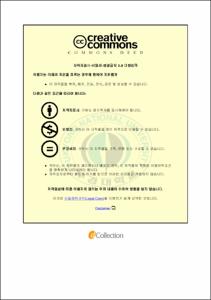아르테미아(Artemia franciscana)내구란에 외래 유전자 이식을 위한 연구
- Abstract
- The objective of this study is to observe the result of foreign gene transfer using the cyst of A. franciscana to conduct risk assessment of living genetically modified organisms (LMOs) in the marine ecosystem.
The result showed that the optimal time for NaCIO treatment to remove the alveolar layer of A. franciscana cysts was 3.5 min. Supplementary treatment of 20 ppm chloramphenicol and 400 ppm oxytetracycline were found to be most suitable for the axenic culture of A. franciscana. The feasibility of gene integration was analyzed in the part of tissues including antenna, endopodite, telopodite and expedite. In result, PCR analysis was available with a small amount of tissues obtained, however, the Artemia which the tissues were removed did not survive even from the axenic culture conditions. In order to establish the optimal particle bombardment condition for gene transfer on the A. franciscana cysts, 27 variations of experiments were performed on 1.35 g (1 g = approximately 1.8 x 105 cysts) of A. .franciscana cysts. The condition –1.6 um gold particle, 1,350 psi helium pressure, 12 cm target distance and a bombardment – was proven to yield the highest result. Although the integration frequency was 18.4% at the highest, the expression - positive individual was not found. A total of 698 A. franciscana cysts (410 decapsulated) was microinjected and treated with tannic acid to protect the embryonic cuticle layer. Only 10 nauplius were hatched (1.2 ± 2.3% of mean hatchability) but none of them could survive beyond the nauplius stage.
Results from this study suggest that the ovoviviparous eggs should be obtained from the mother in order to produce transgenic Artemia through gene transfer trial in the early stage of ontogeny.
- Issued Date
- 2013
- Awarded Date
- 2013. 2
- Type
- Dissertation
- Publisher
- 부경대학교
- Alternative Author(s)
- Jung Ju Yeon
- Affiliation
- 부경대학교 대학원
- Department
- 대학원 수산생물학과
- Advisor
- 김동수
- Table Of Contents
- 영문요약 (Abstract) Ⅰ
목차 (Content) Ⅲ
표목차 (List of Tables) Ⅵ
그림목차 (List of Figures) Ⅷ
I. 서론 1
Ⅱ. 재료 및 방법 4
1. 아르테미아 strain 4
2. 배양 4
2-1. 사육 4
2-2. 난각 제거 4
2-3. 무균 배양 5
3. 도입 유전자 5
3-1. 유전자 제작 5
3-2. 유전자 대량 확보 8
4. Particle bombardment를 이용한 유전자 이식 8
4-1. 처리 조건 8
4-2. 부화율 9
4-3. 분석 9
1) 분자생물학적 분석 9
(1) DNA 추출 9
(2) 중합효소 연쇄 반응(polymerase chain reaction) 분석 10
2) 발현 분석 11
(1) Lac Z 유전자 발현 분석 11
(2) 형광단백질유전자 발현 분석 11
5. Microinjection을 이용한 유전자 이식 15
5-1. 처리 조건 확립 15
1) Embryonic cuticle 막 제거 15
2) Tannic acid 처리 15
3) Microinjection 15
5-2. 부화율 15
5-3. 발현 분석 16
Ⅲ. 결과 17
1. 배양 17
1-1. 난각 제거 17
1-2. 무균 배양 17
2. Particle bombardment를 통한 유전자 이식 18
2-1. 부화율 및 초기 생존률 18
2-2. 분석 30
1) 분자생물학적 분석 30
(1) 일부 조직을 이용한 DNA 추출 및 PCR 분석 30
(2) 중합효소 연쇄 반응(polymerase chain reaction) 분석 30
2) 발현 분석 31
(1) Lac Z 유전자 발현 분석 31
(2) 형광단백질유전자 발현 분석 38
3. Microinjection에 의한 유전자 이식 38
3-1. 처리 조건 확립 38
1) Embryonic cuticle 막 제거 38
2) Tannic acid 처리 38
3-2. 부화율 및 발현율 38
IV. 고찰 43
국문요약 52
감사의 글 54
참고문헌 55
- Degree
- Master
- Files in This Item:
-
-
Download
 아르테미아(Artemia franciscana)내구란에 외래 유전자 이식을 위한 연구.pdf
기타 데이터 / 966.58 kB / Adobe PDF
아르테미아(Artemia franciscana)내구란에 외래 유전자 이식을 위한 연구.pdf
기타 데이터 / 966.58 kB / Adobe PDF
-
Items in Repository are protected by copyright, with all rights reserved, unless otherwise indicated.